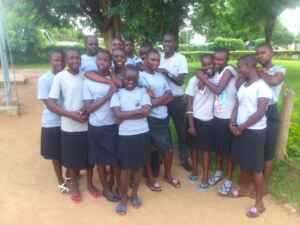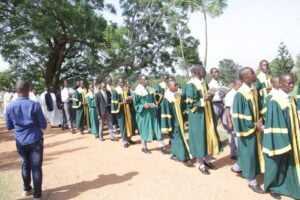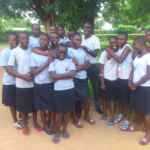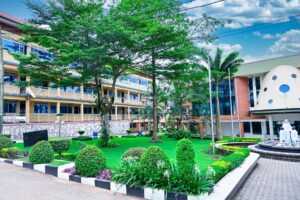
Average Reviews
Description
Mvara Secondary School.
Mvara Secondary School stands as a cornerstone of education in Uganda’s West Nile sub-region. Founded in 1960 by the Church Missionary Society, this mixed day-and-boarding institution has weathered storms, celebrated triumphs, and embraced modernity while maintaining its commitment to nurturing young minds 15. Below, we explore the school’s strategic location, storied history, academic evolution, and transformative community impact.Strategic Location: Bridging Urban Energy and Academic Serenity
Mvara Secondary School’s geographical positioning is a masterstroke of accessibility and inspiration. Located just 3.5 kilometers southeast of Arua’s bustling central business district, the campus offers students a unique blend of urban exposure and tranquil learning environments. Its coordinates—03°01’24.0″N latitude and 30°55’38.0″E longitude—place it near landmarks like the Amnesty Commission office and the serene Jurudano spring, fostering a connection to both civic life and natural beauty5.The school’s proximity to Emmanuel Cathedral (1.25 km southeast) and Barifa Forest (2 km south) further enriches its cultural and ecological context. Barifa Forest, though at risk of degazettement for urban development, remains a symbol of the region’s environmental heritage5. This strategic location ensures students are grounded in their community while engaging with broader societal dynamics.A Historical Voyage: From Foundation to Modern Challenges
Mvara’s journey began in 1960 as a visionary project by Anglican missionaries. For decades, it thrived as a harmonious institution, but the mid-2010s brought turbulence. Violent student strikes in 2016—marked by property destruction and even human waste protests—exposed underlying tensions between the administration and learners. The situation escalated in 2017 when clashes with St. Joseph’s College Ombaci students led to cross-campus damage, highlighting the need for systemic reforms.Alumni interventions proved pivotal. The Mvara Old Students Association (MOSA) identified gaps in career guidance as early as 2010, likening the school’s trajectory to “a ship adrift without a compass”1. Their advocacy spurred management overhauls, including the 2020 appointment of Headteacher Eliakim Matua from Otrave Secondary School and a revitalized Parents-Teachers Association (PTA) under Edward Endraa and Dranduga Augustus. These changes aimed to address declining enrollment, teacher morale, and academic performance through stakeholder collaboration.Academic Renaissance: Triumphs in the New Curriculum Era
Recent years have seen Mvara rise like a phoenix from its challenges. In the 2024 Uganda Certificate of Education (UCE) exams, the school achieved a staggering 99% pass rate, with 225 of 227 candidates securing Division One—a testament to its academic revival. Headteacher Matua credits this success to intensive teacher training on Uganda’s competency-based curriculum, which emphasizes practical skills and continuous assessment.The shift to digital tools has further bolstered outcomes. Partnering with Service Cops and the United Nations Capital Development Fund (UNCDF), Mvara adopted SchoolPay and School Suite platforms to streamline fee payments, attendance tracking, and e-learning1516. Though limited internet access and device shortages persist, the school’s investment in tablets and teacher training reflects a forward-thinking ethos.Beyond the Classroom: Sports Excellence and Community Impact
Mvara Secondary School’s legacy isn’t confined to academics. In March 2024, its boys’ football team clinched the Arua City Post Primary Ball Games championship, defeating rivals Arua Secondary School 4-0—a redemption arc after a penalty shootout loss in 202312. Coach Samson Caesar Okhuti attributed the victory to disciplined teamwork and strategic preparation, calling it “an Easter gift to the school”12.Community projects have also shaped the school’s identity. Initiatives like the Nyaluva Women’s Group-drilled borehole (2014) and TSUPU-funded fencing (Phase Two) enhanced water access and security, mirroring broader efforts to uplift Arua’s urban poor7. These projects, coupled with alumni advocacy, underscore Mvara’s role as a community pillar.Notable Alumni: Lighting the Path for Future Generations
Mvara Secondary School alumni network includes luminaries like Peace Proscovia, captain of Uganda’s national netball team, and James Acidiri, former Member of Parliament for Maracha East. Their achievements exemplify the school’s potential to cultivate leaders who transcend regional and national boundaries.Digital Transformation: Pioneering Uganda’s Educational Future
Mvara Secondary School’s embrace of technology positions it as a trailblazer. The UNCDF-Service Cops partnership launched at the school in 2021 introduced digital payment solutions, attendance modules, and e-learning repositories16. While challenges like low internet penetration persist, these innovations aim to reduce dropout rates and improve financial inclusion—a critical step in a country where 42.8% of girls don’t complete primary education16.Conclusion: A Legacy of Resilience and Renewal
Mvara Secondary School’s story is one of resilience. From student strikes to academic triumphs, it has continually adapted to meet the needs of its learners and community. Today, under Headteacher Matua’s leadership, the school balances tradition with innovation, proving that even institutions steeped in history can evolve.For parents seeking a holistic education, entrepreneurs eyeing partnerships, or travelers exploring Arua’s landmarks, Mvara stands as a testament to Uganda’s educational potential—a beacon lighting the way forward.Explore more about Mvara Secondary School’s journey through the embedded citations, and consider supporting their digital transformation or community initiatives.
Statistic
144 Views
0 Rating
0 Favorite
0 Share
Categories
Related Listings




